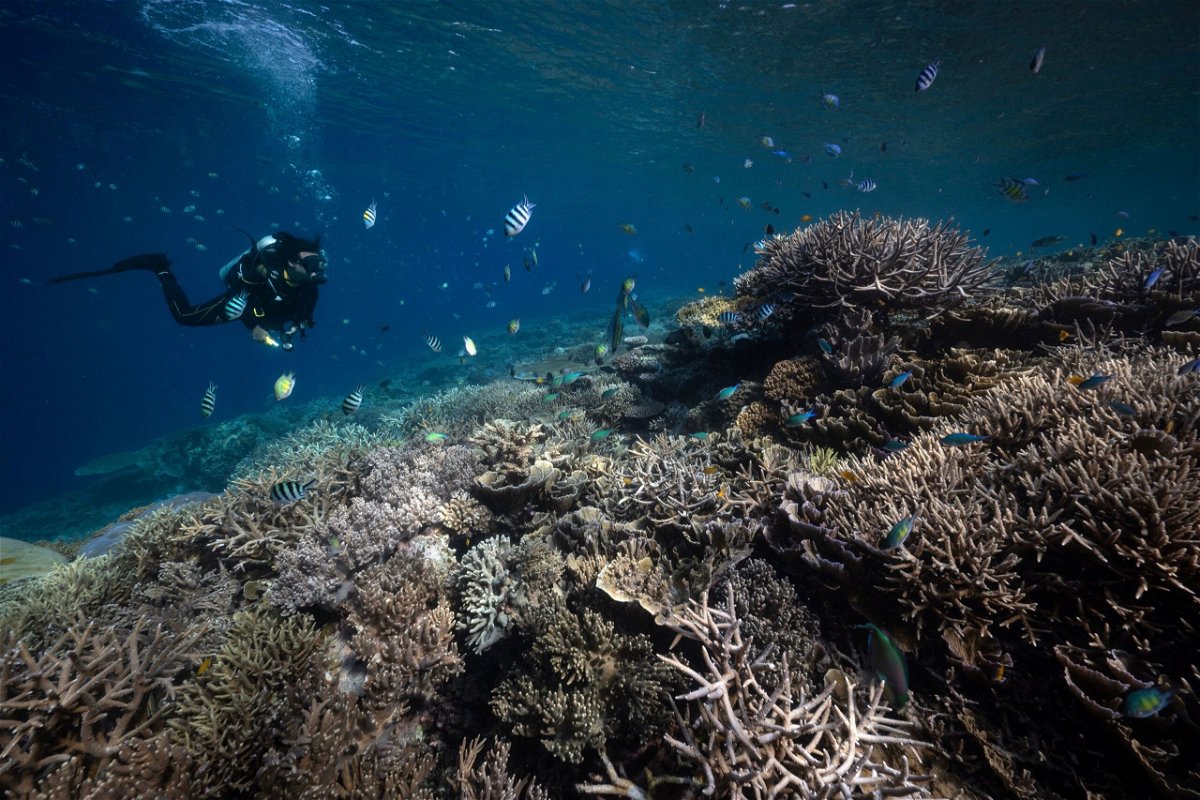Noting ‘unprecedented’ coral bleaching and heat stress, NOAA expands coral reef alert system

This photo taken on November 5
(CNN) — With water temperatures climbing to unprecedented heights, the National Oceanic and Atmospheric Administration has added new levels to its alert system to account for increasingly severe coral bleaching and higher mortality rates.
Three more alert levels have been added to the coral reef alert system. Alert Level 5, the new highest level classified as “near complete mortality,” means “greater than 80 percent of corals in the highlighted area are at risk of dying” due to high, long-lasting water temperatures.
“The widespread intensity of this heat stress was the catalyst to this new update in December 2023,” NOAA said in a February 8 news release.
Prior to the expansion, NOAA’s coral bleaching alert maps consisted of five levels ranging from “No Stress” to “Bleaching Alert Level 2,” which indicated widespread bleaching and death in the reefs. During extreme summer temperatures experienced in 2023, much of the equatorial oceans as well as significant portions of the Atlantic and Pacific fell under the wide domain of Alert Level 2.
Last year, the warmest year since global records began in 1850, according to NOAA’s Annual Climate Report, saw ocean temperatures surge to 100 degrees in some regions and the ongoing marine heat wave lead to the bleaching of entire reefs.
Coral reefs are highly sensitive to ocean warming – even a 1-degree increase in water temperature over four weeks can trigger bleaching, according to The Great Barrier Reef Foundation. The foundation has recorded seven mass bleaching events between 1998 and 2022 due to rising ocean temperatures. In 2023, global ocean temperatures reached nine consecutive months of record warmth, according to the climate report.
A recent study suggests 2024 will see even further damage in the Indo-Pacific due to the warming climate and impacts from the El Niño/La Niña climate cycle.
The-CNN-Wire
™ & © 2024 Cable News Network, Inc., a Warner Bros. Discovery Company. All rights reserved.


